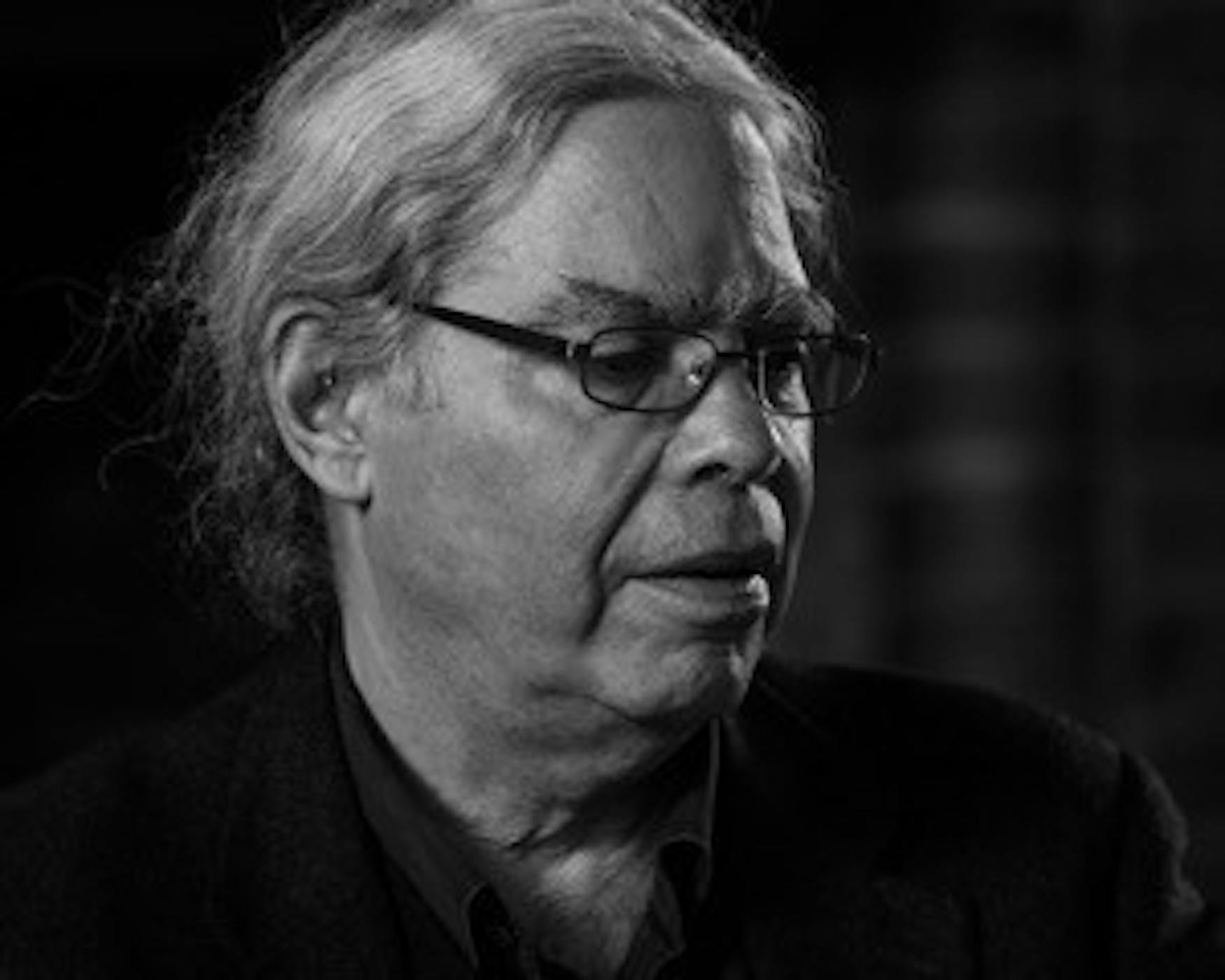A Timeless Quest
Professor Muellner collaborates with students to mass digitize ancient manuscripts, bringing the classics into the modern era
The Homeric textual tradition recognizes that no one person is responsible for the Iliad or the Odyssey. Rather, these texts evolved for well over a thousand years, from the pre-Classical era into the Middle Ages, as the result of intergenerational intellectual collaboration. Similarly, the Homer Multitext Project, which aims to increase digital accessibility to these texts, relies on intergenerational intellectual collaboration between undergraduates and professors and across multiple institutions.
The Multitext project was originally founded in 2007 by Professor Neel Smith of the College of the Holy Cross, a colleague of Prof. Leonard Muellner (CLAS). Smith’s idea was to invite undergraduate students from multiple institutions to the Harvard Center for Hellenic Studies, where Muellner is the director of information technology and publications. Students come with their professors for a two-week seminar each summer, and are trained in reading Homeric manuscripts. Simon hoped that these students would then pass on their knowledge to other people, and the intellectual tradition surrounding Homeric texts would continue.
At Brandeis, the students who received this training were Daniel Cline ’15 and Jennifer Scontras ’15.They are both students of Muellner, who teaches a wide array of courses within the Classical Studies department, including “Greek Lyric Poetry,” “Greek Epic” and “Classical Mythology.” This will be Muellner’s last semester teaching at Brandeis before his retirement.
This training initiative, based on a desire to increase accessibility to the study of the classics, has evolved into “the Multitext project,” which is the creation of an edition of Homer that is electronic and web-based. Unlike printed editions, which offer a reconstruction of an original text as it supposedly existed at the time and place of its origin, this project offers the tools for reconstructing a variety of texts as they existed in a variety of times and places. Muellner is a co-editor of the Multitext project.
There are groups of young people across the country interpreting and uploading these texts, such as students from Holy Cross, the University of Houston, University of Washington, as well as some groups in Europe, including the Netherlands and Germany.
When Google started giving out its first grants in humanities about four years ago, they cited this project as an exemplary initiative in digital humanities of how people can use technology for scholarly research, and which also involves an interesting model of collaboration. “This project is intergenerational, long-term, and it’s something that really is accessible,” Muellner said.
“In theory anyway, [text] is the product of the individual. And for a long, long time, in the history of Western culture, we have thought of Homer as an individual—George Homer, as we call him,” Muellner said in a documentary, produced by VisCenter, about the project. However, despite this imaginary conception of the individual man “Homer,” it is now widely accepted that Homeric texts are the result of compilations of generations of oral traditions.
Due to the fact that these Homeric works did arise from a tradition of oral performance, historical context is necessary to understand them. This is precisely why Muellner and his colleagues aim to digitally portray the history of the circulation of the text of the Iliad and the Odyssey.
Oration is a complex medium that underwent dramatic changes that must be understood within many different historical contexts. The Multitext project contextualizes these texts both synchronically and diachronically.
“The Iliad is the oldest work of poetry in the Western literary tradition,” Muellner said. “It’s using modern technology to make [Homeric] poetry accessible in all of its beauty, power and strength of expression.”
The project’s data is hosted and supported by the Research Computing Center at the University of Houston. Additional support and funding has been provided by the Center for Hellenic Studies, the Gladys Krieble Delmas Foundation, the Andrew W. Mellon Foundation, the National Endowment for the Humanities and the National Science Foundation.
Accessibility is central to the project’s intent. Muellner tells an anecdote from his first trip to Venice, Italy to visit the manuscripts, which were originally given to the Marciana Library in Venice by the famous classical scholar Cardinal Bessarion around the 16th century. Muellner inquired about how many people had accessed the manuscripts since Bessarion’s gift, and was shocked by the answer—120 people. These are the same texts that are now available, thanks to Muellner and his students and colleagues, free of charge through Wikimedia Commons.
Not only are the manuscripts reaching a larger population through technology, but more of the manuscripts are visible to the human eye. Due to the photography, modern scholars can see things ancient scholars have never seen before. “We did natural light photographs, as well as infrared light photographs,” Muellner said. “There are things coming to life, even just physically speaking, that weren’t there before.”
Muellner estimates that about 20 percent of these manuscripts’ content has actually never been published. “Young people are amazingly good at this type of thing,” Muellner said. “They’re getting to do something that has not been accessible to young people before, and they’re a lot better at it than old people with old eyes.”
Muellner emphasizes the intergenerational collaboration that occurs, and the importance of this collaboration with undergraduates in particular, who typically do not engage in research with famous, original texts. “Everyone who is involved gets credit, and their contributions are recorded online, which is important,” Muellner said. “The effort that they’ve put forth is extraordinary. It’s a resource project at a very high level being done by undergraduates.”
The University recently designated a space in the library for the Homer Multitext Project—the Digital Humanities Lab on the Mezzanine Level of Goldfarb Library, which is also home to other related projects. In addition, Muellner will be demonstrating some of these materials to faculty members this Thursday. Cline and Scontras are organizing a meeting to follow the event for students interested in participating in the Homer Multitext Project this week.
To bolster the creative and collaborative nature of this project, a “research blog” is included on the website. This blog acts as a forum on which undergraduates can not only share their findings with an academic community, but also talk about the process of research itself. Muellner says that this is the forum on which Cline has published the findings of his original research. “[Cline] has already made discoveries that have never been made before,” Muellner said. “There’s the research aspect, the collaborating aspect, and there’s the excitement of doing research that everybody has.”
In a sense, the research these undergraduates are engaging in is a study of the study of Homeric texts. The marginal notes that much of their analysis focuses on are the original notes of ancient scholars who read these works. Because of these layers of scholarly analysis, Muellner argues, the students gain the thrill of membership into a storied line of ancient scholars. “This is a way of getting involved, at a more basic level, in a tradition that has been going on for a very long time,” Muellner said.
Muellner senses the students’ pleasure in discovering the timeless nature of the quest for knowledge through the medium of these particular stories. “It’s about the generations of people who have worked with this poetry and learned from it,” Muellner said. “But it’s also about the sheer joy of doing research and publishing materials that have never been fully published and hopefully making them accessible for generations to come.”




Please note All comments are eligible for publication in The Justice.